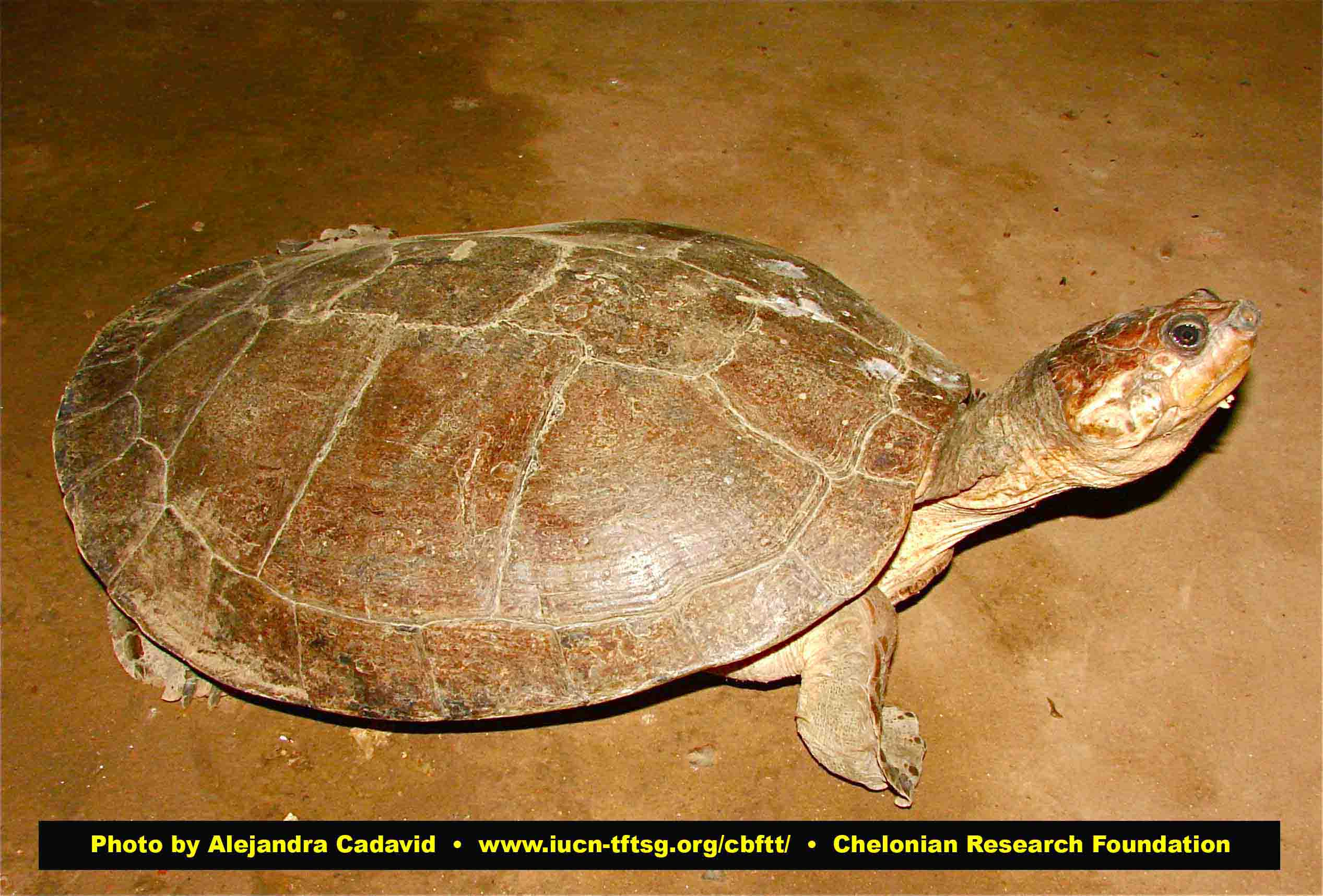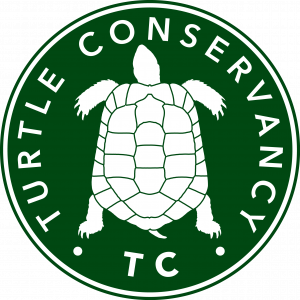Podocnemis lewyana, 024
Podocnemis lewyana Duméril 1852 –
Magdalena River Turtle
Vivian P. Páez1, Adriana Restrepo1,
Mario Vargas-Ramirez2,3, and Brian C. Bock1
1Instituto de Biología, Universidad de Antioquia, Medellín, Colombia
[[email protected]; [email protected]; [email protected]];
2Museum of Zoology, Natural History State Collections Dresden, Königsbrücker Landstr. 159,
D-01109, Dresden, Germany [[email protected]];
3Fundación Biodiversa Colombia, Bogotá, Colombia
Summary. – Podocnemis lewyana, the Magdalena River turtle (Family Podocnemididae), is a medium to large-sized river turtle confined to the Sinú, San Jorge, Cauca, and Magdalena river drainages in Colombia, making it a biogeographic anomaly, being the only South American podocnemid turtle to occur northwest of the Andes Mountains instead of inhabiting the Orinoco, Essequibo, or Amazon drainages. The species is currently classified as Endangered on the IUCN Red List due to the combined effects of habitat modification and the heavy exploitation of adults and eggs for consumption as well as some exploitation of hatchlings for the illegal pet trade. Recent analysis suggests it should be uplisted to Critically Endangered. Information on the species’ natural history has been fragmentary, but recent field and laboratory studies have generated more detailed information on P. lewyana systematics, ecology, distribution, trends in abundances, and levels of genetic diversity within and among populations. Podocnemis lewyana is primarily herbivorous as adults and nests in the dry season, preferentially but not exclusively on sandy beaches. Nests suffer heavy human and natural predation and also experience infestations by invertebrates and fungi. Sex ratios in the field covary with nest temperatures, and laboratory studies have confirmed the existence of temperature-dependent sex determination in this species and a high pivotal temperature (33.4°C). These studies have also demonstrated incubation temperature and maternal effects on hatchling size, mass, and growth rates. In most regions, P. lewyana population densities are low, with low levels of genetic diversity and no evidence of phylogeographic differences among sites. Existing legislation meant to protect the species is largely unenforced. However, recent attempts to support community-based conservation initiatives and educational activities make it more likely that well-founded management projects may be possible in the near future.
Distribution. – Colombia. Restricted to the Sinú, San Jorge, Cauca, and Magdalena river drainages in northwestern Colombia.
Synonymy. – Podocnemis lewyana Duméril 1852.
Subspecies. – None recognized. Genetic analyses demonstrate no significant phylogeography.
Status. – IUCN 2008 Red List: Endangered (EN A1bd) (assessed 1996, needs updating); CITES: Appendix II; Colombian Red Book: Endangered.
Citation:
Páez, V.P., Restrepo, A., Vargas-Ramirez, M., and Bock, B.C. 2009. Podocnemis lewyana (Duméril 1852) – Magdalena River turtle. In: Rhodin, A.G.J., Pritchard, P.C.H., van Dijk, P.P., Saumure, R.A., Buhlmann, K.A., Iverson, J.B., and Mittermeier, R.A. (Eds.). Conservation Biology of Freshwater Turtles and Tortoises: A Compilation Project of the IUCN/SSC Tortoise and Freshwater Turtle Specialist Group. Chelonian Research Monographs No. 5, pp. 024.1-024.6, doi:10.3854/crm.5.024.lewyana.v1.2009, //iucn-tftsg.org/cbftt/.
(Adobe Acrobat 6.0 or later required)

Podocnemis lewyana, nesting adult female from the Chicagua River, Colombia.
Photo by Alejandra Cadavid.
Distribution:
.jpg)
Distribution of Podocnemis lewyana in Colombia in northwestern South America. Red points = museum and literature occurrence records based on Iverson (1992) plus more recent and authors’ data; green shading = projected distribution based on GIS-defined hydrologic unit compartments (HUCs) constructed around verified localities and then adding HUCs that connect known point localities in the same watershed or physiographic region, and similar habitats and elevations as verified HUCs (Buhlmann et al., unpubl. data), and adjusted based on authors’ data.








